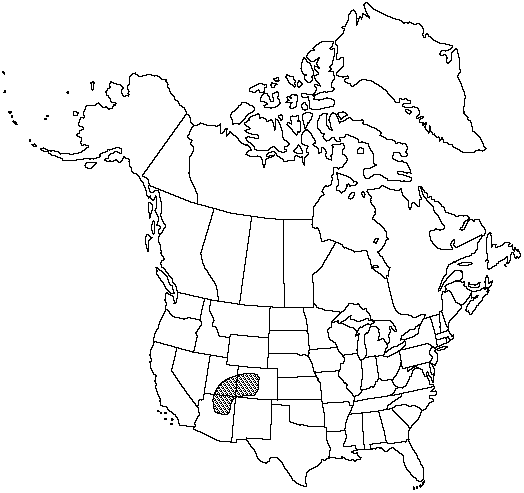Botrychium echo
Amer. Fern J. 73: 57. 1983.
Trophophore stalk 0–4 mm; blade shiny green, broadly oblong to oblong-deltate, 1–2-pinnate, to 4 × 3cm, firm. Pinnae to 4 pairs, spreading or only moderately ascending, well separated, distance between 1st and 2d pinnae not or slightly more than between 2d and 3d pairs, basal pinna pair approximately equal in size and cutting to adjacent pair, oblanceolate to linear-spatulate, ± parallel-sided, divided to tip, shallowly lobed or rarely 2-cleft, basal pinna cleft into single basiscopic projection and large acroscopic projection, margins entire, apex acute, venation pinnate. Sporophores 1–2 pinnate, 1–2 times length of trophophore rachis. 2n =180.
Phenology: Leaves appearing in June, dying in September.
Habitat: Grassy mountain slopes, snow fields, road ditches, and sand dunes
Elevation: 2500–3700 m
Distribution

Ariz., Colo., Utah.
Discussion
Botrychium echo is one of four moonwort species that commonly produce clusters of minute, spheric gemmae at the root bases. This species tends to have a reddish brown stripe along the common stalk from the base of the trophophore stalk.
Of conservation concern.
Selected References
None.